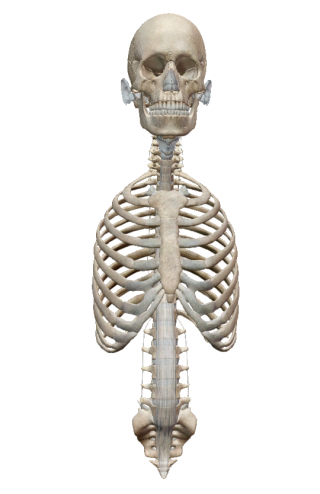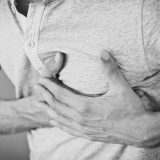The Correct Posture

“Now we will help you get the correct posture. The right posture is ideally aligned when viewed from the side, with the ankle bones, centre of the knee, center of hip, shoulder, and ears all located on a vertical line. Let’s make the correct posture through these body arrangements”

Most people will respond to questions about the correct posture with advice such as the guidelines outlined above and ‘straighten your waist, stretch your chest, and pull in your chin.

Once people start to follow these guidelines, their whole body starts to become tired and sooner or later they return to their original postures.
If so, is it always a “fixed” alignment posture that brings fatigue and pain all the time? Is there any reason why you should forcibly put your ankle bone, knee bone, hip joint centre, shoulder, and ears in a vertical line? In some articles published in the early 2000, it is said that just sitting in a “right posture” can reduce the pressure on the spine and joints to less than 20-30%. Therefore, it is said that we should strive to meet this posture. However, recently published kinesiology papers have some preconditions that must be checked to ensure correct posture. Is the sum of the curvature angles of the cervical vertebrae and lumbar vertebrae equal to the sum of the angle of curvature of the thoracic vertebrae? (do the cervical, thoracic and lumbar curves have a natural S shape?), Whether the center of gravity is forward or backward, whether the ankle is flexible, whether it is flat or not, please check and determine the right posture to fit your body. So instead of blindly aligning your body’s coordinates on a vertical line, you need to use more different information to understand your body and make each sort of alignment that suits you.


Figure 1) Fetus in the uterus Figure 2) A child in a crawling period
When you look at the spine of a child who is just born, it is usually C-shaped. As the child turns its body and lifts its head and starts to look at things around them, the curvature of the cervical vertebra is gradually made, and as the child starts to crawl or walk, the weight of the internal organ due to gravity and the use of the iliopsoas muscle and erector spinae muscle will begin to be created. The S-curve created in this way makes it possible to offset the impact of the body that people can walk on and off naturally. The action of this force is represented by a simple formula in structural dynamics.
R (resistance to impact) = N2 + 1 (N = number of vertebrae)
For example, if a person’s vertebrae is in the form of a line, then R = 02 + 1 = 1, which is more resistive to shock than those with naturally formed cervical, thoracic and S shaped lumbar- I think it is about 10 times lower. (R = 32 + 1 =10). Then, should I just make the “right posture” while stretching my shoulders and pulling back to make my waist straight and reduce the resistance to impact?
The right posture I think is a posture that allows us to get out of the thought of “good posture when shown to other people” that we have created, and to make the most effective posture when our body makes any action, that is, the posture that best adjusts the “balance” of the body. The body that balances is as also mentioned above, 1: the muscle uses the least energy in a more efficient way to bring maximum efficiency. 2: It is known that the posture that can effectively fix the spine that plays a pivotal role in maintaining the posture is the basis of the right posture.
To make the right posture, you have to make a sequence of where to start. The body consists of an axial skeleton including the skull, spine, and ribs, and appendicular skeleton including shoulders, limbs, and pelvis. In order to create a right posture, you must first understand your own axial skeleton. When the axial skeleton begins to find the necessary centre of gravity of the body, the attached skeleton follows the position of the axial skeleton to some extent.


Figure 1) Axial skeleton Figure 2) Appendicular skeleton
Let’s take an example so that you can check your body really simply. First lie down and look at the ceiling. Bend your knees and gently lift your pelvis from the upper abdomen to the floor. Is your waist comfortable when you maintain this posture? When you straighten your legs in a lying position and put your hands under the lumbar spine, there should be a natural curve. If you can feel the back of your back pulling, you should try massage your back muscles and do upper abdominal muscle exercises for about 1 minute and check again. Do you feel comfortable lying down? Try sitting down on a chair and use your lumbar spine and pelvis to push your belly forward to make the maximum bend of your lumbar spine, and pull it back as much as possible to make it C-shaped. It’s just the lumbar vertebrae and the pelvis, not using the upper body, and if you make front and back bend as much as possible, you can feel the middle point . Make sure that the lumbar vertebrae makes a gentle, uniform bend when placed midway between the front and back curves. Please check if you are comfortable with maintaining that posture for about one minute. Now stand in front of the mirror and look at your profile. Whether your body shape is in the form of S, or whether there are only two bends or only one bend. Check if the centre of gravity is tilted forward or backward, or if the hip is slightly bent. If you check your posture while lying down, sitting down and standing up and all the movements are made naturally, there is a high chance that your body will be in the correct posture for your body shape.
The correct posture correction should begin with the position you are most likely to use during the day. If you are working in the office for more than 7 hours, start from the sitting position and if you are a chef, start with a standing position. The right posture is the one that minimizes the degree of fatigue when you are making pain or have pain for a long period of time. Therefore, the beginning of the correct posture correction is not the unreasonable alignment from the view of others of the shoulder joints, hip joints, knee joints and the radial bone, but the posture which maintains the most comfortable posture with the least amount of force. Try to understand your body from today.



